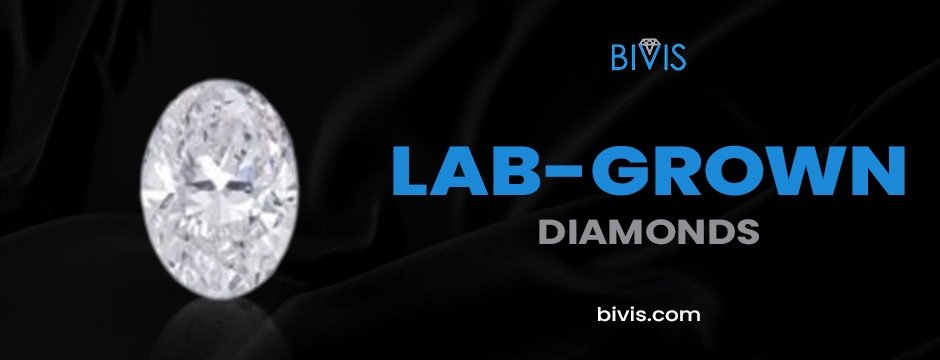
Over the years, the diamond industry extremely shifted towards sustainability with lab-grown diamonds as the eco-friendly alternative to naturally mined diamonds. These are made in a laboratory under controlled conditions, and bear the same chemical and physical properties as that of natural diamonds but are far less harmful to the environment.
These diamonds are thus becoming an increasingly popular option as conscious and ethical decisions from buyers and jewellers are on the rise. This blog examines the environmental benefits of such diamonds: including their tiny ecological footprint, lower carbon footprint, and changing the diamond industry into a brighter, more sustainable future.
Reduced Environmental Impact
The greatest environmental advantage, within limits, of lab-grown diamonds is minimal environmental impact as compared to that caused by traditional diamond mining. Depending on the part of the world, traditional diamond mining can be quite damaging to the ecosystems. Large-scale mining may have widespread ramifications for the local ecosystems, including deforestation, a loss of biodiversity, the depletion of surface and groundwater resources, and pollution of this groundwater and surface with toxic chemicals.
On the contrary, the diamonds made in the lab are grown in a clean laboratory environment with minimal disruption to their surroundings and without any harmful mining practices. Choosing these diamonds, on the other hand, shows commitment to other environmental causes and helps avoid habitat destruction, pollution of water sources, and many other harmful outcomes associated with diamond mining.
Fewer carbon emissions
Diamonds are said to have a huge carbon footprint due to the heavy machinery operations, transport, and energy needs involved in extraction, which contribute to exceedingly high emissions. Additionally, the often remote locations of any diamond mine compound these emissions by relying on fossil fuels during transportation.
The diamond assortments produced in laboratories, meanwhile, are controlled for energy used in the extraction of diamond stones, as the laboratories often get their energy from solar or wind sources in the process of minimizing the environmental cost. Hence, these diamonds generally bear much less carbon derogation than mined diamonds.
Ethical Sourcing and Fair Labor Practices
Lab-made diamonds are not just eco-friendly; they may also be more ethically produced than natural diamonds. For many decades, the mins and mining industries have been guilty of violating human rights, including the exploitation of workers, the use of child labour, and the exposure of workers to dangerous working conditions. The issues leading have been codified into often use of the phrase ‘blood diamonds or conflict diamonds’ to reference those diamonds funding violence and war.
These controversies can be avoided with Synthetic diamonds. These diamonds are bred in a sterile environment free from problems of labour exploitation or hazardous working conditions. Consumers can be better assured that the diamond they purchase does not infringe on human rights or go on to support conflict in war-torn areas.
Ethically Considered Alternatives to Mining
Laboratory-grown diamonds present one of the more sustainable options; however, they are not the only ethical choice. Some diamond miners are trying to improve the environmental and social conditions of conventional diamond mining. Companies that follow strict environmental and labour standards are becoming increasingly common. Many of these companies focus on sustainability and offer traceable, ethically sourced diamonds with certification of origin.
But still, the overall environmental cost is quite large; even these improvements are unlikely to change that. For many consumers, commercially produced gems that rise from the most sustainable practices upward seem to remain the environmentally friendly option apparent, controlled framework through which ethical sourcing may be established.
Longevity and durability
Lab-made diamonds are durable materials just like natural ones. They resist scratches, making them long-lasting because of their sturdiness and hardness. With such traits, these diamonds would be appreciated by investors as they wouldn’t have to go through recurring replacing.
Their durability also allows diamonds to keep their value for a long time and thus makes them a viable choice for sustainable living. While more and more consumers are looking for eco-friendly and sustainable products in which to invest, lab-grown diamonds offer a financially and environmentally viable solution.
Consumer Awareness and Demand
With the rising consumer awareness regarding environmental and ethical issues, we have a burgeoning market for products that are sustainable and eco-friendly. More and more consumers are becoming choosy to the buyers with the products they buy, seeking for the products showing affinity to their values. These fit well with a new consumer mindset. They are ethical, sustainable, and stylish with lab-grown diamonds as an alternative to the traditional ones.
This change in consumer preference has been recognized by jewellers and designers, and lab-grown diamonds are increasingly part of the collections they now offer. As demand for diamonds in this category rises, more companies channel funds into sustainable practices and technologies. This, in turn, assures that lab-grown diamonds will play an increasingly significant role in the future of the diamond industry.
Wrapping up
Lab-grown diamonds constitute a giant step toward a more sustainable and ethical future for the jewellery industry. It provides consumers with a beautiful and eco-friendly alternative to mined diamonds: minimal environmental impact, reduced carbon emissions, and ethical production processes.
These diamonds are now clear choices for conscious consumers who intend to contribute positively to their purchases, while the environmental and social costs of diamond mining become more widely known. To learn more about these diamonds and to find the perfect eco-friendly diamond, refer to us at Bivis.
